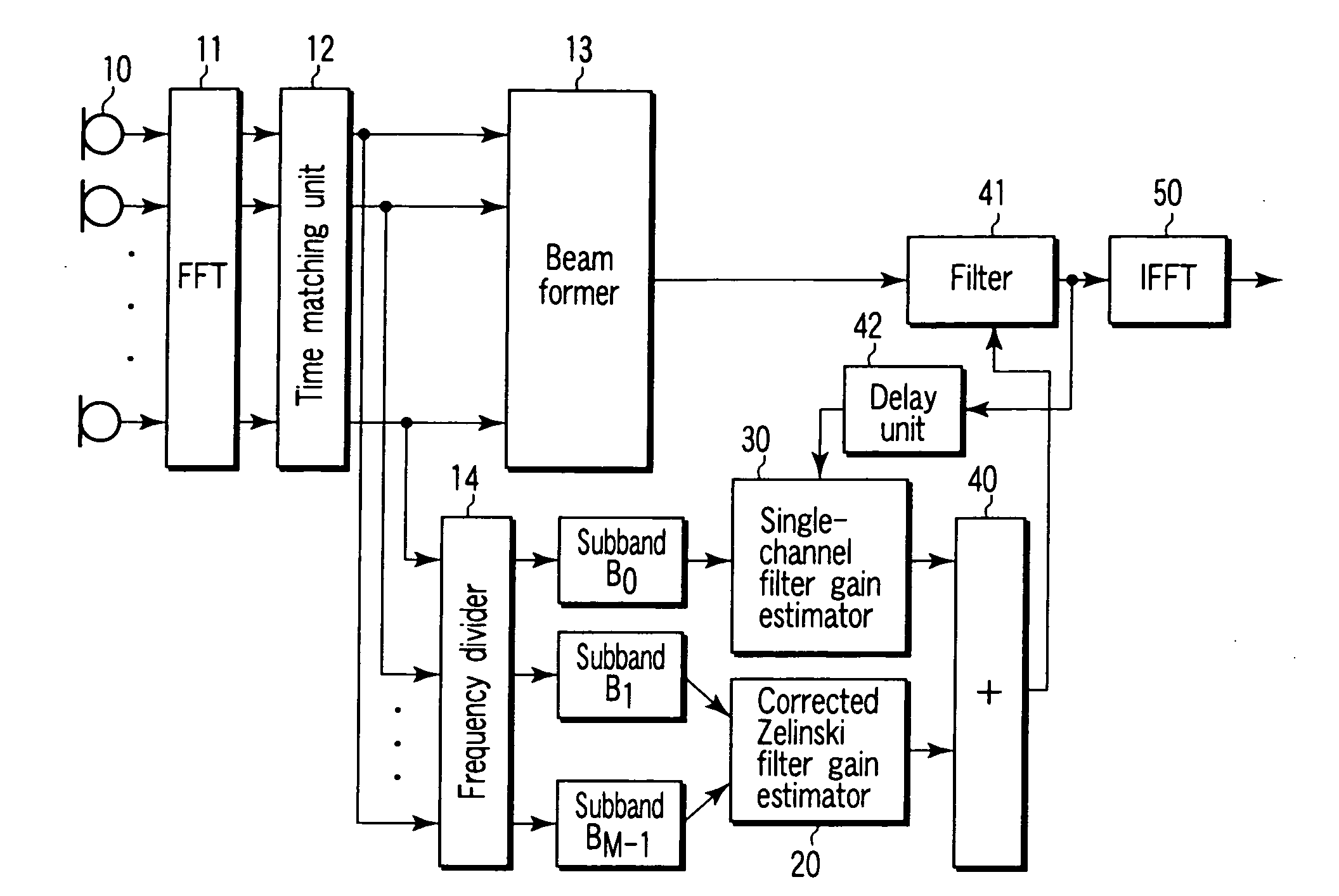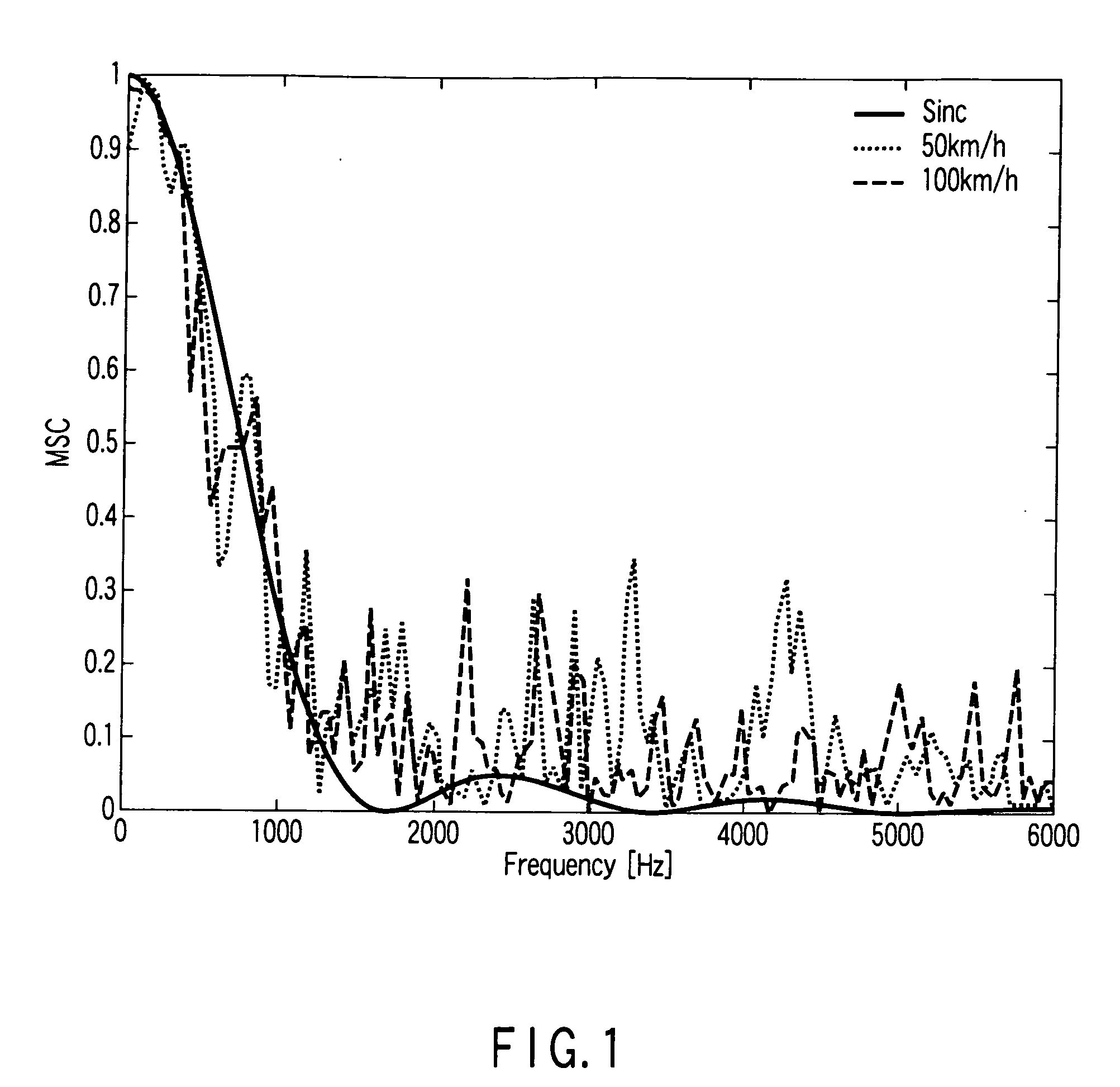Post-filter for microphone array
a post-filter and microphone technology, applied in the field of post-filters for microphone arrays, can solve the problems of reducing the reliability of a signal received by a microphone located at a far point, reducing the gsc and zelinski post-filters, and rarely satisfying assumptions in the actual environment, so as to reduce the “musical noise” and reduce the high correlated noise instances. , the effect of reducing the low correlated nois
- Summary
- Abstract
- Description
- Claims
- Application Information
AI Technical Summary
Benefits of technology
Problems solved by technology
Method used
Image
Examples
Embodiment Construction
[0048]An embodiment of the invention will be explained with reference to the drawings. In the description that follows, first, an explanation is given about a coherence function and an application thereof in a model noise field. Then, a hybrid post-filter in a diffused noise field is explained, and finally, the advantages of a post-filter according to the invention are described.
[0049]A complex coherence function defined by the equation below is widely used to characterize the noise field.
[Expression5]Γxixj(k,l)=φxixj(k,l)φxixi(k,l)φxjxj(k,l)(17)
where φxixj(k,l) is a cross-correlation spectral density between two signals xi(t) and xj(t); and φxixi(k,l) and φxjxj(k,l) are autocorrelation spectral densities of the signals xi(t) and xj(t), respectively. A magnitude-squared coherence (MSC) function, which is another important means, is defined as a square of an amplitude of the complex coherence function given by MSC(k,l)=|Γxixj(k,l)|2 used in this specification to analyze the noise fie...
PUM
 Login to View More
Login to View More Abstract
Description
Claims
Application Information
 Login to View More
Login to View More - R&D
- Intellectual Property
- Life Sciences
- Materials
- Tech Scout
- Unparalleled Data Quality
- Higher Quality Content
- 60% Fewer Hallucinations
Browse by: Latest US Patents, China's latest patents, Technical Efficacy Thesaurus, Application Domain, Technology Topic, Popular Technical Reports.
© 2025 PatSnap. All rights reserved.Legal|Privacy policy|Modern Slavery Act Transparency Statement|Sitemap|About US| Contact US: help@patsnap.com



